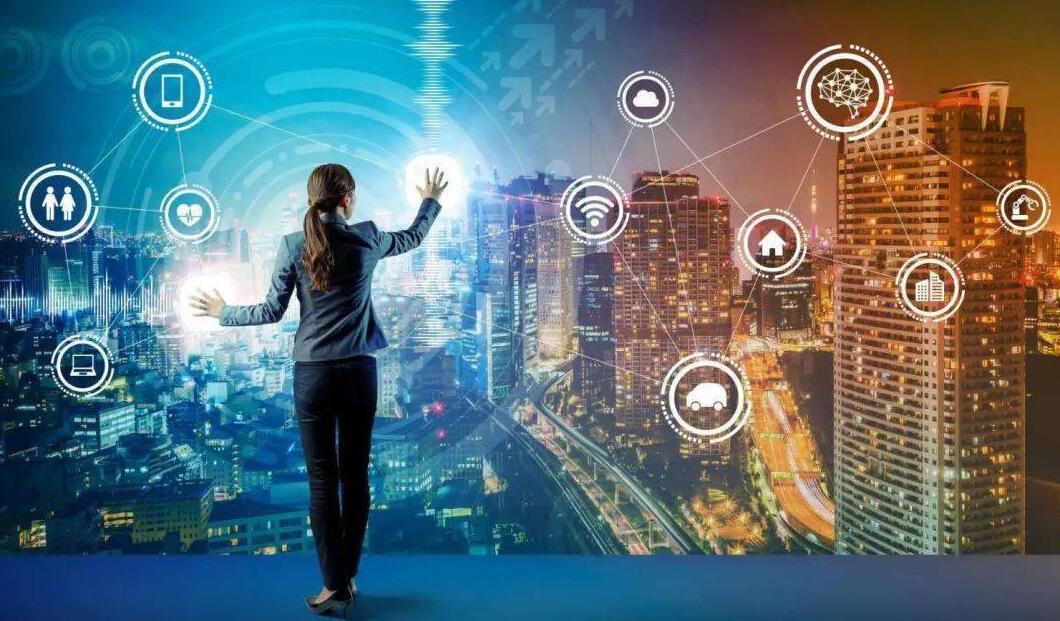By integrating Artificial Intelligence for the IoT into our designs and connecting smart devices, we create a global network of assets that not only improves our quality of life but also enhances safety and convenience.
The IoT provides us with eyes, ears, and even hands, granting access to physical reality from the edge of the network. Here, we collect raw data and stream it to the cloud, where it is processed into valuable, applicable knowledge.

With the addition of high-performance processing capabilities, we are shifting more information processing and analysis from data centers and the cloud to the edge. This transition is where the magic occurs. We are witnessing transformative changes in infrastructure, industries, and personal devices, enriching our lives and making them more vibrant through these advancements.
The Future World of Artificial Intelligence for the IoT
The IoT currently presents us with unprecedented opportunities to enrich our lives. But this is just one step on the way to a more powerful and impactful goal. I’m referring to Artificial Intelligence for the IoT.
De slimme voorwerpen van vandaag, die gegevens doorsturen, onze voorkeuren leren en bestuurd kunnen worden door apps, zijn geen AI-apparaten. Ze "communiceren" met elkaar, maar werken niet samen.
Een slimme container die de koelketen van een vaccinlevering bewaakt, is geen AI-systeem tenzij het "handelingen kan uitvoeren", zoals het voorspellen van temperatuurveranderingen in de container en het automatisch aanpassen van de koeling.
Een zelfrijdende auto of een reddingsdrone die autonoom kan navigeren op zee is eigenlijk een AI-systeem. Als het namens jou kan rijden of vliegen, dan kun je erop vertrouwen dat er belangrijke AI-capaciteiten in het spel zijn.
Talen lezen/spreken/vertalen via algoritmes, de massa en snelheid van objecten voorspellen, aandelen voor je kopen, gezichten herkennen of borstkanker diagnosticeren zijn allemaal kenmerken van AI.
Now, imagine a world where all AI devices are interconnected. Extending the edge of Artificial Intelligence for the IoT with cognitive functions such as learning, problem solving and decision making will allow today’s smart objects to achieve true self-extension from purely utility tools, multiplying the possibilities for us to interact with the real world.

AI integreert in het IoT
Als belangrijk onderdeel van het IoT vormt AI de basis voor geheel nieuwe toepassingen en diensten. Siemens gebruikt AI bijvoorbeeld om de werking van zijn gasturbines te verbeteren. Door te leren van operationele gegevens kan het systeem de uitstoot van giftige NOx aanzienlijk verminderen en tegelijkertijd de prestaties en levensduur van de turbines verbeteren. Siemens gebruikt ook AI-systemen om de bladhoeken van downstream windturbines automatisch aan te passen om de output van de fabriek te verbeteren.
GE has developed an industrial inspection service based on drones and robots and uses AI to automatically navigate inspection equipment and identify defects automatically from data collected by the equipment. In healthcare, Thomas Jefferson University Hospital in Philadelphia seeks to improve the patient experience through automated language processing, which will allow patients to control room environments and request various information through voice commands.
Rolls-Royce ontwikkelt een onderhoudsdienst voor vliegtuigmotoren die gebruik maakt van IoT en machine learning om patronen te herkennen en operationele inzichten te identificeren die aan luchtvaartmaatschappijen verkocht zullen worden.
Op de consumentenmarkt laat Google's Duplex ons zien hoe de toekomst eruit ziet: een virtuele assistent die "echte" taken uitvoert via de telefoon, zoals het plannen van een afspraak bij de tandarts of het maken van een dinerreservering. Deze taken vereisen meestal menselijke interactie tussen twee partijen, maar niet in de toekomst, en de AI-stem van Duplex klinkt zo natuurlijk dat de persoon die de telefoon opneemt zich misschien niet eens realiseert dat hij of zij tegen een machine praat.
Wat betekent dit nu voor de toekomst? De waarheid is dat ook al is er een overvloed aan bloeiende IoT AI apps, het nog steeds onmogelijk is om te speculeren over wat er nog meer zal komen in de toekomst. Eén ding is zeker: de maatschappij ondergaat een fundamentele verandering in het huidige digitale tijdperk. De paradigmaverschuiving die gepaard zal gaan met de convergentie van AI en IoT zal nog groter zijn dan bij de komst van pc's of mobiele telefoons. NXP stimuleert deze verschuiving met veilige connected processing oplossingen aan de rand, die talloze toepassingen mogelijk maken in de toekomst van IoT AI.
Efficient security based on the principles of “security by design” and “privacy by design” will be key to eliminating the risks involved. If we keep this in mind when designing future infrastructures and devices, Artificial Intelligence for the IoT will change our lives. And it is our responsibility to bring about a brighter future for humanity.